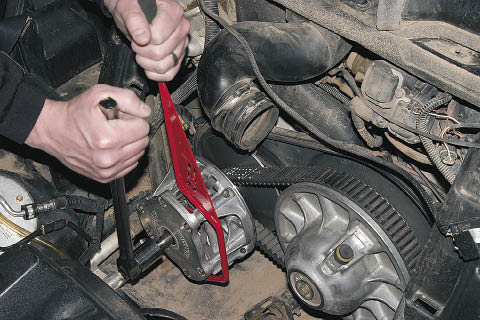 A simple rule of thumb is the higher the spring rate, the higher the rpm will be. Each number on the spring rate affects a different part of the shift curve. See Chart A. The first number mainly affects engagement which is low rpm when the unit begins to move from a dead stop. The stiffer the spring's initial rate, the higher rpm the unit will rev before the clutch grabs the belt and the machine begins to move. The second number has more to do with the upper mid-range and peak rpm. The stiffer the final rate, the faster the machine will get to high rpm and the better it will maintain peak rpm through varying conditions.
A simple rule of thumb is the higher the spring rate, the higher the rpm will be. Each number on the spring rate affects a different part of the shift curve. See Chart A. The first number mainly affects engagement which is low rpm when the unit begins to move from a dead stop. The stiffer the spring's initial rate, the higher rpm the unit will rev before the clutch grabs the belt and the machine begins to move. The second number has more to do with the upper mid-range and peak rpm. The stiffer the final rate, the faster the machine will get to high rpm and the better it will maintain peak rpm through varying conditions.
Chart A
| Part # | Color | Stripe Color | Compression Rate-Pounds@2.25" | @1.25" |
|---|
| 40-400 |
RED |
GOLD/BLACK |
55 |
225 |
| 40-401 |
RED |
WHITE/BLACK |
65 |
245 |
| 40-402 |
RED |
GREEN/BLACK |
75 |
260 |
| 40-403 |
RED |
GOLD/SILVER |
105 |
260 |
Secondary Spring

